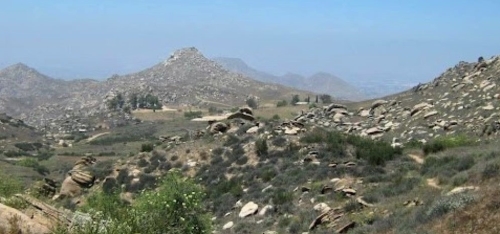Pollinator Conservation Projects at UC Riverside
Inland Empire City Nature Challenge (Every April). Since 2021, UCR has participated in the iNaturalist Bioblitz event, City Nature Challenge as part of the Inland Empire. This year, it takes place April 25-28, 2025. For more information, check out our
More than Monarchs Butterfly Garden: We are planning a new garden! Our Entomology Teaching Garden (see below) has been such a success, we have a new butterfly host plant garden in the plans. This demonstration garden will attract adult butterflies to native nectar plants and provide them with the appropriate host plants to support the development of their caterpillars. This host plant garden will provide a unique learning experience for students to see metamorphosis in action while supporting our butterfly pollinators. Stay tuned!
Want to support the creation of this new host plant garden for butterflies? Check out: our More than Monarchs Butterfly Garden crowdfunding site.
Entomology Teaching Garden: In June 2023, we completed installation of our departmental teaching garden. We selected plants that are important to our local ecosystems, as well as vary in their bloom time, and what birds and insects they attract. This “living laboratory” offers students the opportunity to learn about our native plants and observe what insect and bird pollinators they attract. To date, over 1000 students have observed nature or collected from this garden, including three students who have conducted some of their thesis research in the garden. Students learn to identify native plants, and have the opportunity to collect and identify floral visitors. We thank all students, staff and faculty who have supported this garden. Special thanks to David Rankin for his tireless assistance with plant propagation and planting.
Want to check out the garden? Come visit! It is located in front of the UCR Entomology Research Museum. Read more about this new garden in today's Inside UCR
Already native bees have made this teaching garden their home. This short video shows some cute Lassioglossum (Dialictus) bees bringing back nectar and pollen to their nest.
Interested in honey bee health? Check out what is going on at CIBER!
Find the best native plants for butterflies and moths with The Butterfly Net: The insect order Lepidoptera--which includes butterflies, moths, and skippers--is one of the most diverse groups of insects, with over 14,000 species in North America. Throughout their life cycle, Lepidopterans provide critical ecosystem services. As larvae, caterpillars are a primary food source for native birds; and as adults, butterflies and moths help pollinate wild and agricultural plants. To complete this fascinating life cycle, butterflies and moths depend on both host plants (for caterpillars) and nectar plants (for adults). And they are picky eaters! Like the monarch butterfly needs milkweed plants, most of the thousands of butterfly and moth species in California require very specific native plant species in order to thrive. That means we need to be picky in choosing which plants to provide them. Recent PhD graduate, Dr. Chris Cosma (now at the Conservation Biology Institute), has developed a web application, The Butterfly Net, that helps anyone in California select the best native host and nectar plants to support butterflies and moths at their location. Check out the tool here: Butterfly Net.
Many more projects are ongoing at UCR! We will continue to add projects and activities that our students, faculty and staff are involved in that promote pollinators.
Future Projects

Keep an eye on this space! We will update with news about upcoming activities and pollinator projects at UCR.
Currently have a pollinator project and want to join our Bee Campus USA efforts? Please contact us at UCR.pollinators@gmail.com.

Have an idea about a potential pollinator project for campus? Please reach out! We'd love to hear from you.